1. Pea Gravel
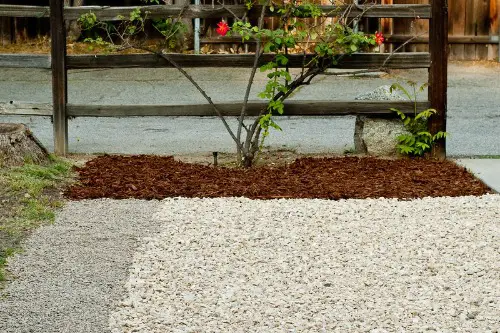
Pea gravel can look like the perfect low-maintenance ground cover—clean, uniform, and subtly stylish. It’s often used in walkways or around garden beds to add texture and improve drainage. The problem? As soon as it rains, those little stones shift and scatter like marbles, especially on a slope.
They also tend to get coated with mud or disappear beneath pooling water if drainage isn’t perfect. The rain can expose underlying fabric or soil, ruining the neat appearance. And because pea gravel doesn’t lock together, footprints and water paths quickly form messy ruts. What was once polished and tidy can look sloppy after just one storm.
2. Mulch (Especially Dyed Mulch)
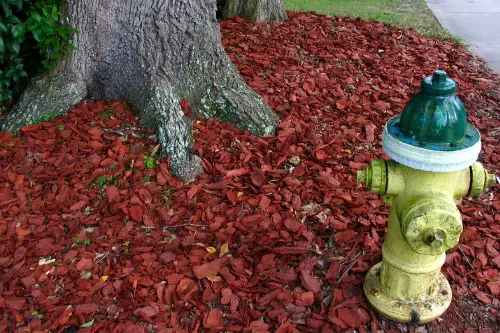
Fresh mulch always gives a garden bed that crisp, finished look, and dyed mulch adds a bold pop of color. But those rich red or black dyes are often water-based, which means they run when it rains. After a heavy shower, the color can bleed onto sidewalks, driveways, or even plant leaves. That crisp look fades fast and leaves behind a streaky mess.
Worse, rain can float mulch out of your beds and dump it onto the lawn or walkways. The finer the mulch, the more likely it is to migrate in runoff. This not only creates cleanup headaches but also leaves soil bare and prone to erosion. So while dyed mulch starts out showy, it quickly becomes more hassle than help.
3. Stepping Stones Set in Soil
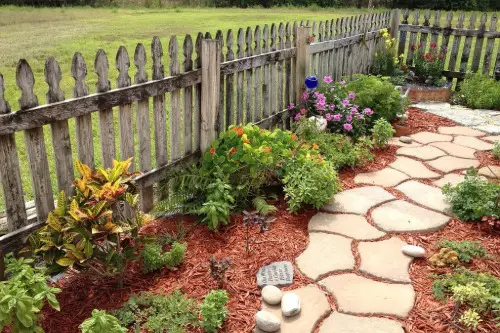
Stepping stones arranged in bare soil or sand look rustic and charming, like a woodland path. But once rain hits, that setting turns into a muddy trap. The soil underneath softens, and the stones can sink or tilt at odd angles. What starts out as functional décor quickly becomes a tripping hazard.
Puddles also tend to form around the edges, especially if the soil isn’t perfectly level. The aesthetic appeal goes out the window when stones are surrounded by muck. Plus, any attempt to clean up can just make things messier. Unless they’re set in proper gravel or mortar, these stones are more trouble than they’re worth after a storm.
4. Decomposed Granite
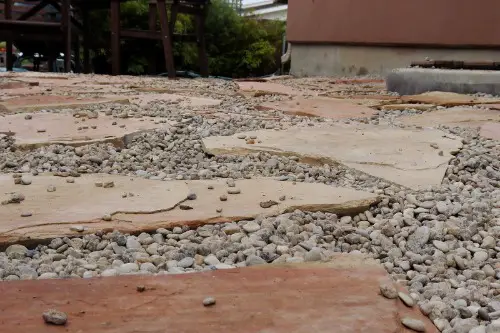
Decomposed granite paths or patios have a lovely, natural finish and feel great underfoot when dry. It compacts nicely—until it doesn’t. A sudden downpour turns the surface into mush, washing away fine particles and leaving ruts and exposed rocks. It can also stain nearby surfaces as it runs off in colored rivulets.
Without stabilizers, decomposed granite quickly erodes, especially on sloped areas. The washed-out spots look patchy and uneven, which kills the sleek effect. Rain also makes it cling to shoes, meaning you’ll track mud into the house. Great in theory, messy in practice.
5. Wooden Walkways
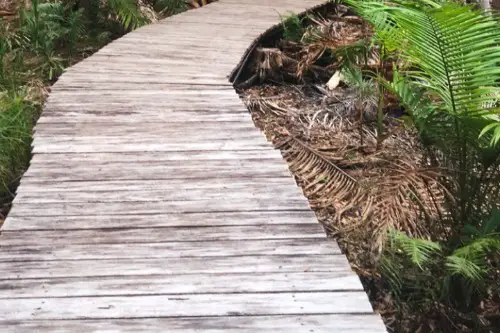
Wooden paths or decking through gardens can be absolutely gorgeous, blending with the natural landscape. But unless it’s specially treated and installed with excellent drainage, wood gets slippery and dangerous when wet. Algae and mildew can build up quickly in damp conditions, especially in shady areas. That charming boardwalk vibe turns into a slip-n-slide.
Even pressure-treated wood can eventually warp or cup after repeated wetting and drying. Rainwater pooling on the surface speeds up that wear. And if the wood isn’t sealed regularly, the aesthetic charm quickly fades into rot and discoloration. It’s a high-maintenance choice disguised as low-key charm.
6. Polished River Rocks
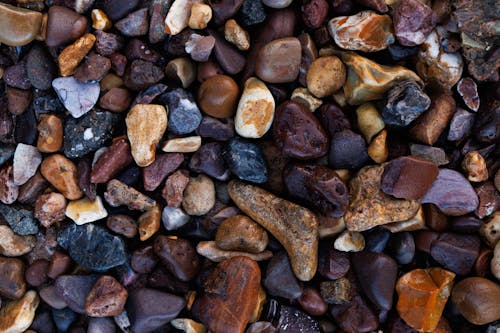
Polished river rocks are often used in decorative beds or dry creek beds to give a glossy, sculptural look. But add rain, and those pretty stones become slick as ice. They’re dangerous to walk on, even more so on inclines or curves. The risk of slipping is real, especially for pets or kids.
Beyond safety, these rocks can become dislodged in heavy runoff and end up scattered or buried. That tidy layout becomes disorganized and uneven quickly. And once they’re covered in dirt or algae, the polished sheen disappears. The payoff just doesn’t last unless conditions are perfectly dry.
7. Cardboard or Newspaper Under Mulch
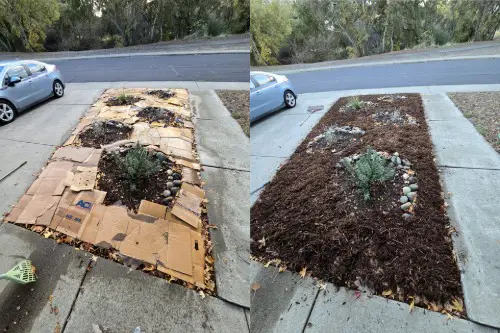
Many gardeners use cardboard or newspaper as a weed barrier beneath mulch, and it works well—at first. But once it rains, especially heavily, the paper layers begin to break down quickly. As they decompose, they rise to the surface or tear into unsightly clumps. It’s not a good look peeking through your tidy mulch layer.
Worse, partially decomposed paper can form a slimy mat that blocks air and traps moisture. This can suffocate plant roots or promote fungal growth. What started as an eco-friendly shortcut turns into a garden eyesore. Unless buried deep or covered with heavy mulch, it’s a soggy mistake waiting to happen.
8. Painted Terracotta Pots
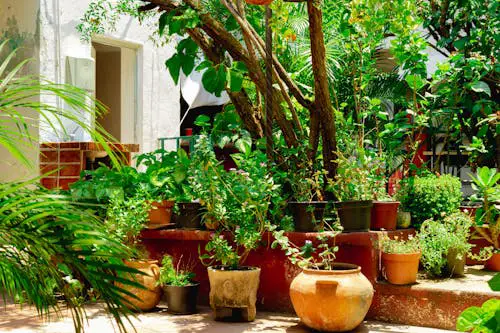
Terracotta pots with bright paint or decorative finishes add instant charm to garden spaces. But when exposed to rain, painted surfaces often bubble, peel, or fade quickly. Terracotta is porous and absorbs moisture, causing any non-waterproof paint to deteriorate from the inside out. That beautiful design starts flaking off by the second storm.
Even if sealed, poor drainage or water pooling at the base of the pot can lead to cracking. Over time, paint can trap moisture inside, accelerating the pot’s breakdown. Once the finish is compromised, it’s hard to salvage the look. What seemed like a Pinterest-worthy upgrade becomes a chalky, crumbling disappointment.
9. Fabric Landscape Edging
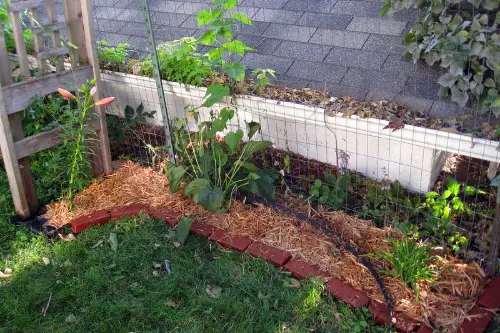
Flexible fabric or plastic landscape edging can look sleek and subtle, especially when newly installed. But after a rainstorm, these materials often pop out of place or buckle due to shifting soil. Water loosens the ground around them, and the light material can’t hold firm. Instead of keeping garden lines neat, it starts to sag or stick out.
The result is a wavy, uneven border that looks like it was never finished. Worse, the exposed fabric edge can trip mowers or snag trimmers. Once it warps, it’s hard to get it back into shape without pulling up the whole run. What looked tidy yesterday turns sloppy fast when water gets involved.
10. Cheap Outdoor Rugs
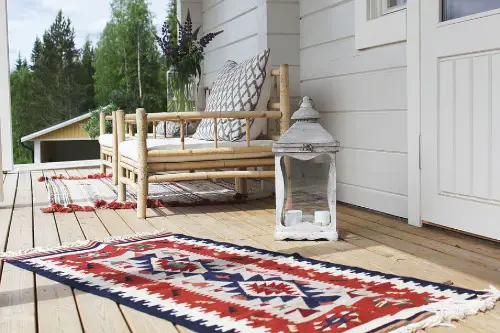
Outdoor rugs can add softness and color to patios or garden nooks, giving the space a cozy vibe. But unless they’re made of truly weatherproof material, the first rain will wreck them. Many budget options soak up water instead of shedding it, leading to soggy fibers and moldy smells. They can also stick to the surface underneath and start to break down.
The edges often curl, and dirt trapped in the wet rug turns into sludge. In just one storm, that bright accent becomes a wet mess you have to dry, clean, or throw away. The aesthetic is lovely in good weather but totally impractical long-term. Unless you bring them in after every forecast, they’re more hassle than they’re worth.
This post 10 Garden Materials That Look Great Until the First Rainstorm was first published on Greenhouse Black.
